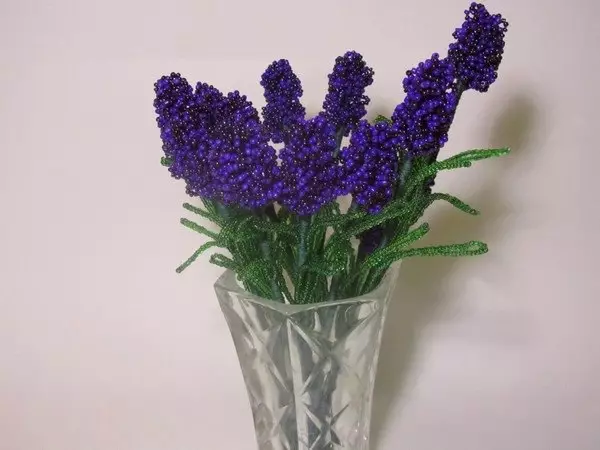Lavender is a very beautiful plant with a soothing and fascinating smell that loved around the world. This plant is devoted to songs, pictures, and also embroidered on the canvas. Lavender woven from beads is almost impossible to distinguish from a natural flower. Thanks to the lavender schemes from beads, which are presented in this article, you can quickly and easily weigh the whole bouquet of this gentle flower.
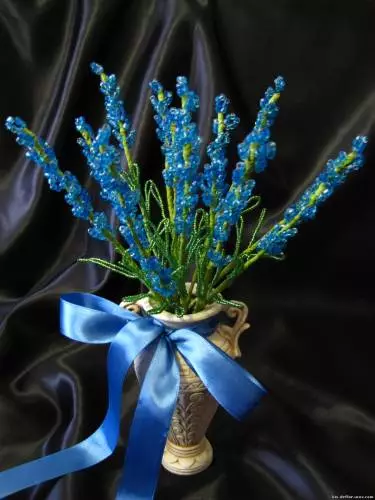
Popular weaving method
This method of weaving will provide fluffiness and "volume" of the crafts. Start the first master class stands from the manufacture of a lavender flower. On a long wire to dial enough beads, and after twist it. The first four loops will be riding a flower and need to be made of seven beads. Twisting loops, leave one end of the wire for 10 centimeters, so that the problem does not occur when fixing. After the top will be ready, make the remaining loops of 9 bisperin.
The more hinges, the more beautiful it is a handicraft. Then touch them tightly on the left tail of the Wire. At the top of the lavender should be sharp, and to the bottom expand.
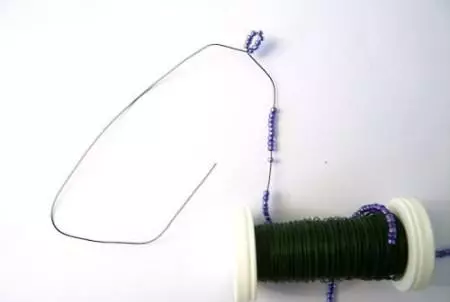
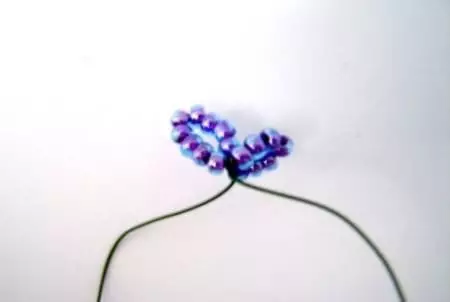
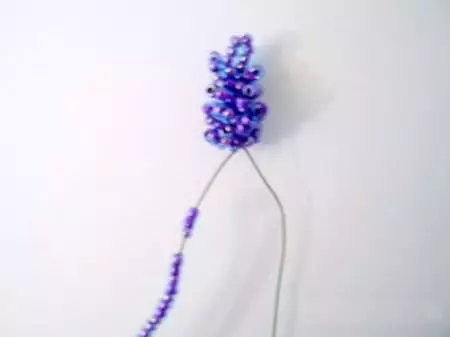
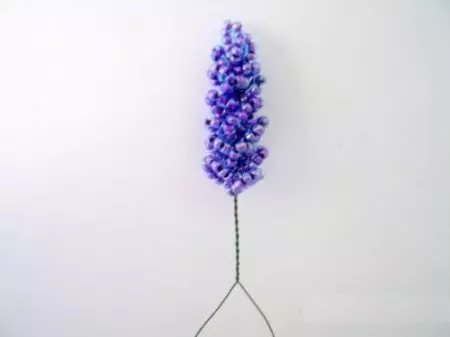
Leaflets are performed by the technique of parallel weaving. For one branch, there will be no less than five sheets. Their weaving scheme:
- 1 row - one bisper;
- 2 rows - two beads;
- 3-11 rows - three bispers;
- 13 row - one bisperin.
On a note! Each leaf should have a ponytail of a wire for fastening a length of 4 centimeters.
Having finished weaving, you can start collecting branches. To do this, take a thick thick wire 20 cm long and fasten the flower and leaves to it. Next, to reap the skeleton with ribbon or threads. How to do it correctly, you can see in the photo:
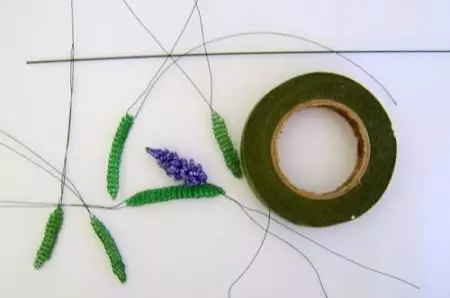
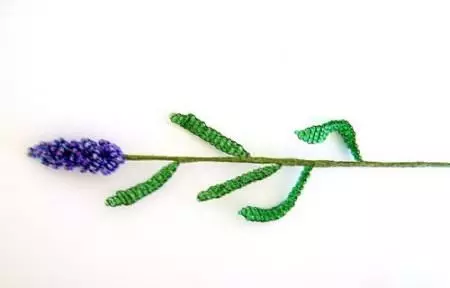
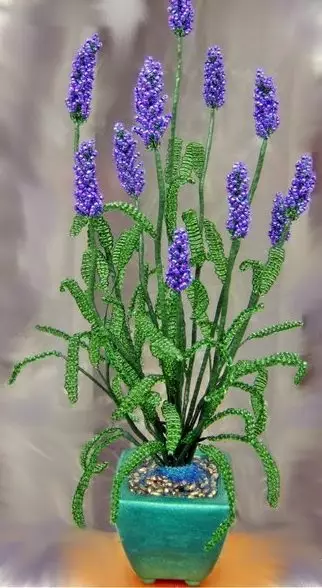
Finished crawling to plant a pot. Beautiful lavender is ready!
Huge lavender bouquet
For weaving a whole bouquet of lush lavender, you will need:
- 150 g beads (dark blue, purple and green colors);
- Wire (0.3 mm, 0.6 mm and 1.1 mm thick);
- Sharp scissors.
Article on the topic: Pirate hat do it yourself from paper: master class with video
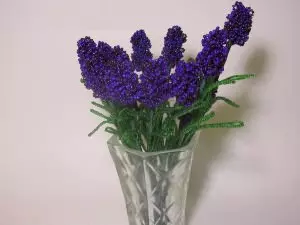
To begin with, you need to dial the entire purple and blue beads with a diameter of 0.3 mm on the wire, while not cutting off from the bobbin. There should be about five meters bead low. It should be borne in mind that a lot of wires come in handy. Next weave three loops. Each must go 9 pieces of beads. In centimeters it is about one and a half centimeters beaded low. There should be 300 petals for lush bouquet. Approximate calculation - 20 petals on the average length of lavender.
With the help of looping techniques, model leaves from a green bead. Sizes can fluctuate, because real leaves cannot be all of the same size. Then proceed to the assembly of flowers: to a thick wire with a diameter of 1.1 mm to fasten rubber petals with green thread. Continue one in a checker order. At the end, cover the barrel acrylic varnish and put a bouquet in a vase.
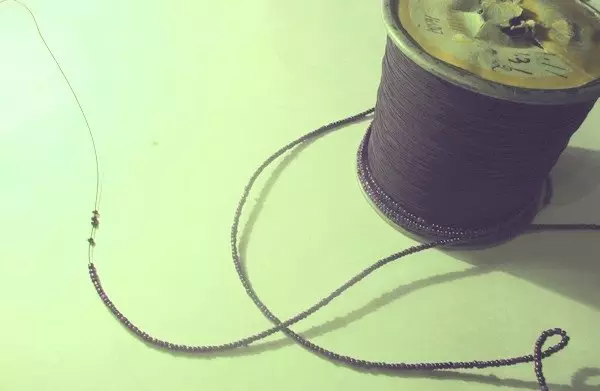
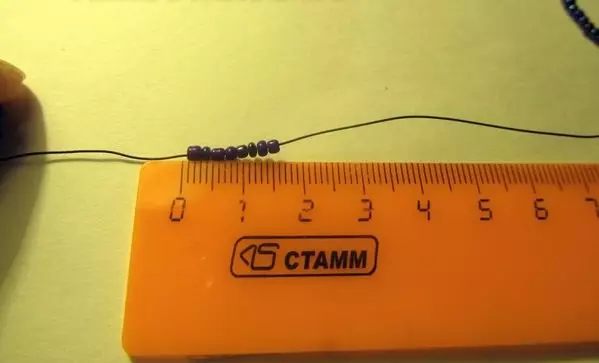
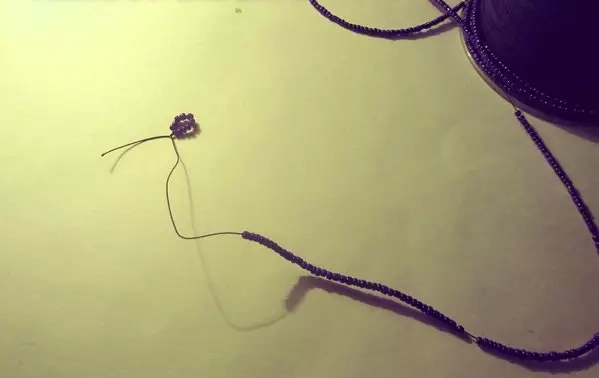
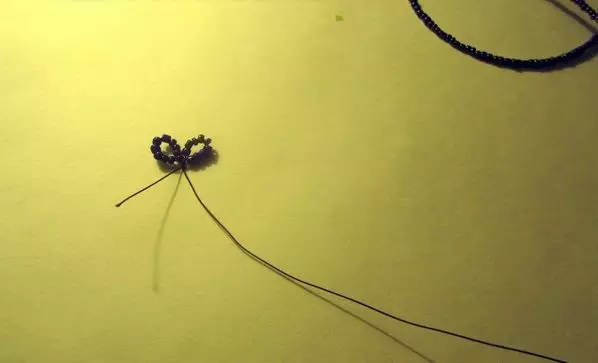
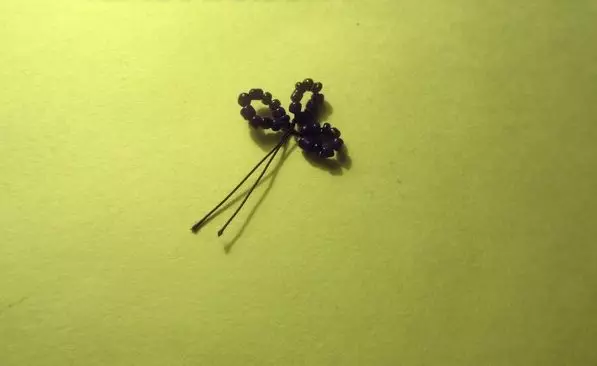
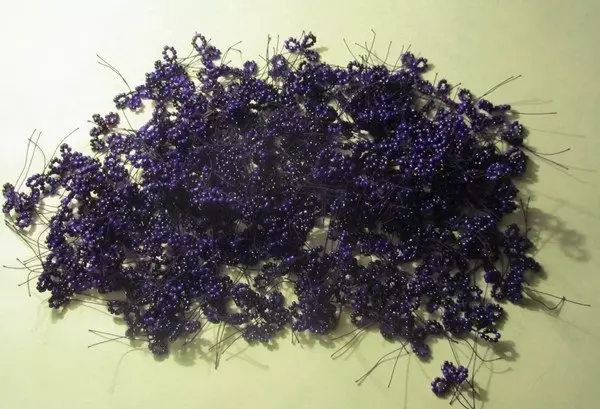
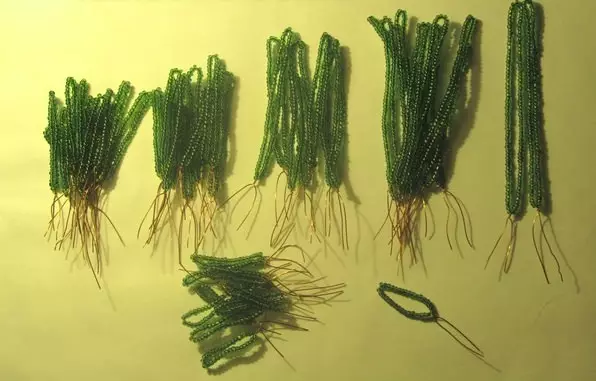
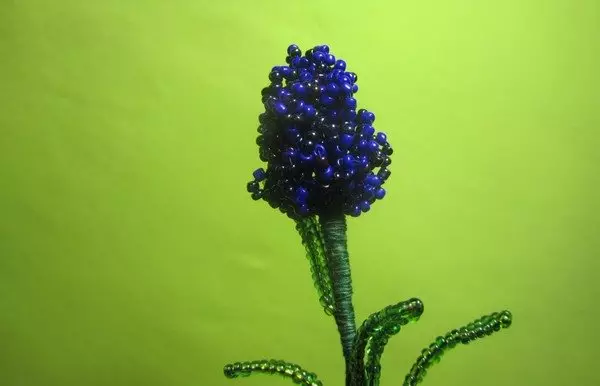
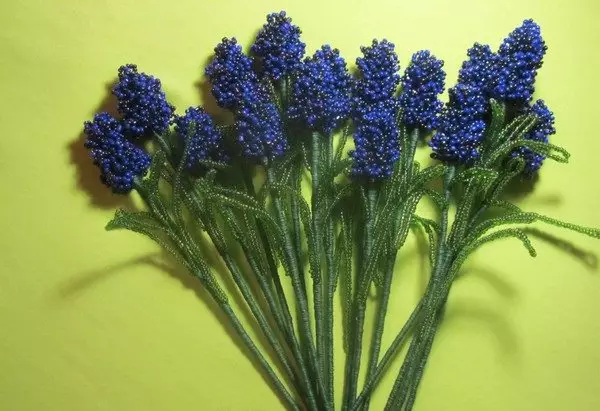
Big lush bouquet ready!
